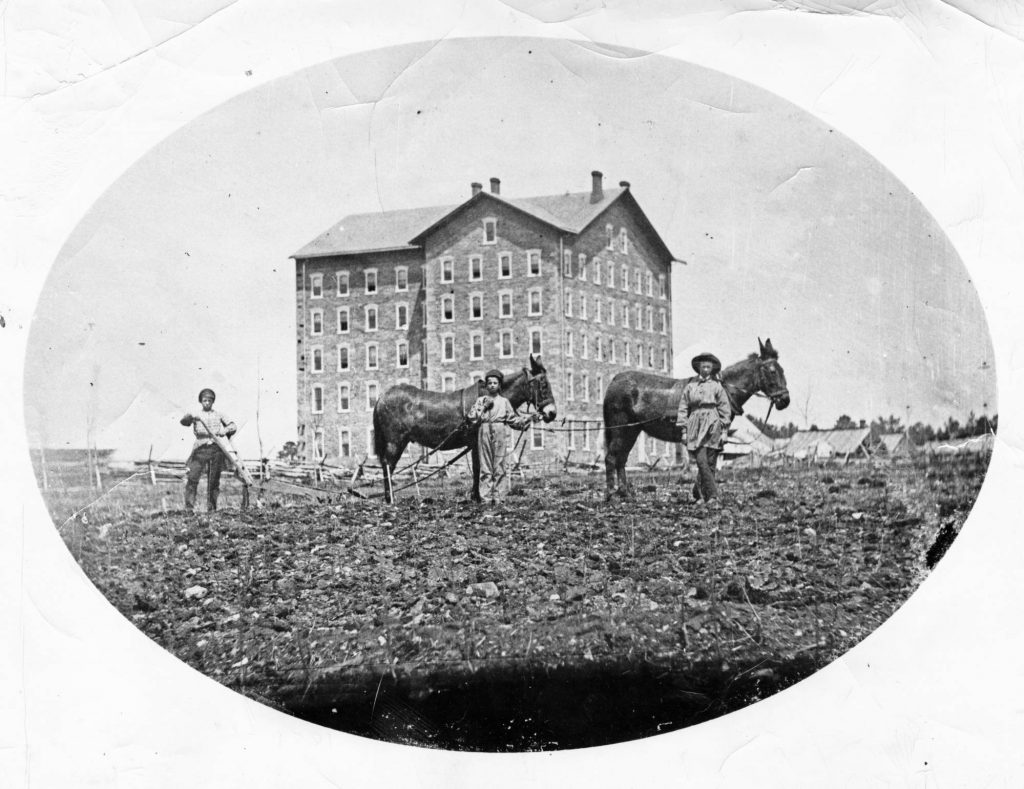In 1998, Douglas Granger founded Salimetrics in a “dark, underequipped basement lab” at Penn State. While studying salivary cortisol, he found that while the research findings were high-impact, assay methods weren’t standardized and comparing data between studies was a challenge.
Granger’s team recognized the need for better assays for this emerging field, so they maxed out their own credit cards and charged ahead. In the years that followed, Salimetrics became a world leader in salivary bioscience research. Their advancements include salivary measures for disease, inflammation, and even biological changes like the synchronized hormones of newlyweds in love.
According to Granger, Happy Valley—in particular, the environment in the company’s home at Penn State’s Innovation Park— played a major role in its success. If Salimetrics had started up somewhere like California, Granger says it may have never gotten up and running.
“The employees would have been much more expensive, and it would have taken a much larger investment to get it off the ground. Plus, there weren’t resources like Ben Franklin to help us in California. There is startup help, but most [Silicon Valley] investors are looking for the next big thing – the next million-dollar idea – not the next little thing that could grow.”
Salimetrics’ discoveries join a long list of game-changing discoveries that make Happy Valley stand out. Here are ten more.
#1. Animal nutrition gets smart, with the invention of the calorimeter.

In 1902, pioneer animal nutritionist Henry Armsby, the first Dean of Penn State’s School of Ag, invented the calorimeter to monitor animals’ metabolism, a major breakthrough that determined the energy value of food for livestock and helped determine how much feed farm animals required to produce meat or milk.
#2. Penn State researchers revolutionize diesel engines.

In 1923, Paul Schweitzer and K. J. Dejuhasz began one of the first systematic research programs in diesel engineering. Over the next 30 years, their discoveries in fields such as supercharging and scavenging pioneered the way for today’s more efficient and powerful engines.
#3. Synthesized progesterone lays the groundwork for the birth control pill.

When Penn State Chemistry Professor Russell Marker synthesized the hormone progesterone in the 1937, his research laid the foundation for such important medical applications as the birth control pill, cortisones, and hormone and steroid therapies.
#4. National defense is bolstered with the formation of Penn State’s Applied Research Laboratory (ARL).

Penn State’s Applied Research Laboratory was formed in 1945 at the behest of the U.S. Navy. Originally focused on the development of undersea weapons technology, ARL now includes a broad research portfolio that serves America’s national security, economic competitiveness, and quality of life.
#5. A single Air Force contract yields three industry-disrupters.

In 1946, three Penn State staff members working on an Air Force contract formed Haller Raymond & Brown. By the mid-1960s HRB-Singer grew to more than 1,000 scientists, mathematicians, engineers, consultants and support personnel at its offices in State College’s Science Park. In the 1950s, three HRB-Singer employees founded Community Energy Corp., bringing cable TV to the area. Community Energy Corp. evolved into C-COR Electronics Inc. In 1965, C-COR introduced the use of integrated circuits in amplifiers used on utility poles and in 1969 was the first to use heat fins on amplifiers. In 1991, C-COR was the first to introduce a 1 GHz amplifier. From the 1990s until its sale in 2007, C-COR’s business focus moved from hardware amplifiers to communications service and software such as video on demand and cable television advertising insertion.
#6. The first experimental observation of the atom on Penn State’s campus.

In 1956, Professor of Physics Erwin Mueller developed the Field Ion Microscope. A magnification of 1,000,000 or more and a resolution of 0.25 nanometers made it possible for the first time to obtain clear images of individual atoms and their arrangement on the surface of a sample. Mueller became the first person ever to “see” an atom with his landmark advance in scientific instrumentation that magnified these building blocks of the universe more than 2 million times.
#7. The leading weather forecasting source in the world starts (and stays) in Happy Valley.

In 1962, Penn State graduated Joel Myers founded Accuweather, now the leading commercial weather service in the world, reaching more than 1.5 billion people daily. Accuweather’s 350-person staff, including 100 meteorologists, provides forecasting and graphics to more than 235,000 print and broadcast media clients, more than 850 newspapers around the world 1,200+ websites. The company also pioneered graphical weather content for wireless devices.
#8. Cardiac research leads to life-saving breakthroughs.

In 1974, a long-life rechargeable heart pacemaker was developed at The Milton S. Hershey Medical Center with assistance of College of Engineering personnel. The Heart Assist Pump, developed by faculty in the colleges of medicine and engineering in 1976 to prolong the lives of cardiovascular patients, pioneered applications of fluid mechanics and was the first surgically implantable, seam-free, pulsatile blood pump to receive widespread clinical use. It led to the Penn State Heart, first successfully implanted in 1985. Additionally, a surgeon and two engineers at Penn State perfected the world’s first long-life, rechargeable heart pacemaker.
#9. Chromatography pioneer Restek invents coating that revolutionizes analytical instruments.

Chromatography company Restek Corporation opened in 1985. In 1987, the company invented the original Silcosteel coating, “as a way to make metal as inert as deactivated glass in analytical instruments.” The coating team evolved into its own company, now SilcoTek, while Restek became a leading developer and manufacturer of chromatography columns and accessories
#10. Videon forges digital revolution, from DVDs to 4k video encoding.

In 1997, coworkers in the middle of a difficult corporate restructuring started their own company – Videon – and jumped right into the middle of the digital revolution. They made history with their optical disc technology, developing DVD and Blu-ray Disc navigators. They quickly moved from DVDs to BluRay for LG, to enabling Sony’s GoogleTV product, to the #1 video app in Google store to 4k HEVC video encoding appliances in 2017.
These eleven milestones are just a few of the success stories that have been born here in Happy Valley. Did we miss any? Let us know which Happy Valley Innovations you’d like to celebrate in the comments below.
Learn about Happy Valley Industry 4.0 change-makers, when you sign up for our weekly e-letter, where we talk about optimizing business, increasing throughput, improving safety and beating back global competition, among other timely tech topics. Join our community of Industry 4.0 leaders and sign up today!






